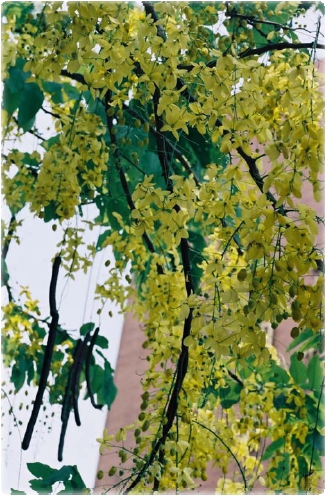


Indian laburnum is also known as "Persian Soap Pod". It is indigenous to India; its scientific name is Cassia fistula L from the family Fabaceae and it is a deciduous tree. The tree grows to a height of around 8-12 meters, the leaves are formed by around 4-8 pairs of leaflets. It was introduced to Taiwan and cultivated by the Dutch in 1645.
 |
In early summer, the flowers are produced in racemes which grow fully from the branches. Under the blue midsummer sky, the golden flowers bloom. The fluttering petals are like golden raindrops and fall everywhere on campus. The flowering season is from May to July. From summer to the end of winter, the 30-60 cm long seed pods turn from light green to dark green to deep purple as time passes, almost like a smoked sausage being dried from a pole.
|


















 NTNU School Tree
NTNU School Tree